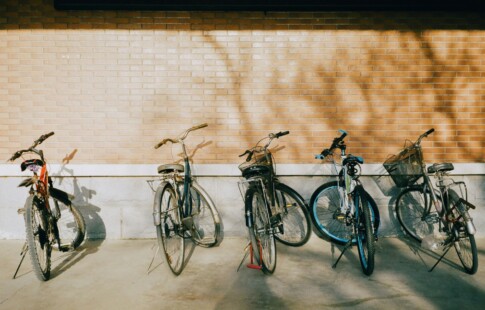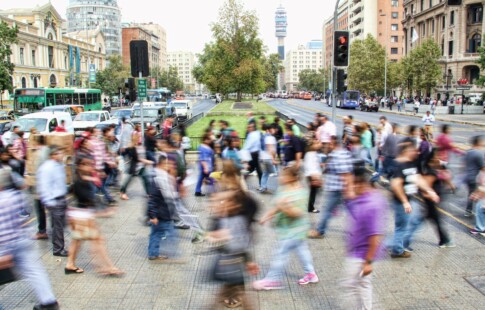
How to Save Water Daily in 8 Unsuspecting Ways
We are reader-supported. When you buy through links on our site, we may earn affiliate commission.
Increasing water accessibility and ensuring global water sanitation is one of the United Nations Sustainable Development Goals. For developed and urban regions of the world, water is often taken for granted. However, water scarcity is a top concern, as many die from waterborne illnesses yearly and go dehydrated because of poor water transportation. What you can do is learn how to save water to improve dispersal and access.
You shouldn’t leave the water running while you brush your teeth or allow faucet leaks to go on for too long. But these are some lesser-known ways to minimize water waste and increase awareness about usage.
1. Put a Harvesting Bucket in Your Shower
Families with water can waste up to 180 gallons per week from leaks alone — consider how much goes to waste everywhere else.
Gathering water from your shower is easy, and you can repurpose it for tons of activities around the house. First, consider placing a bucket or bin under the faucet while you wait for the water to warm up. There is no point in wasting perfectly good water when the only downside is that it isn’t warm enough to shower in. Use the cooler water to wash the windows of your car, water house plants, or fill a pet’s water bowl.
For bonus points, time your shower so you don’t spend forever dumping gallons down the drain for no reason. Even shortening it by one minute is monumental. We understand the warmth feels nice, but saving water is nicer.
2. Clean Your Plate
Don’t overstuff yourself on dinner, but it makes it easier to clean your dishes if there isn’t sauce caked onto the dish or drying rice requires a chisel to chip away. If you worry about overeating, get smaller portions. But, an unexpected way to reduce the water you use for cleaning dishes is to lick the plate clean of food.
Need to know how to save water in other ways for cleaning dishes? Never run a half-load in the dishwasher — only press that button when it is full. Additionally, minimize how many cups you use by using a reusable water bottle.
3. Say No to Restaurant Refills
Restaurants and hospitality services account for around 15% of water use in the U.S. That’s a lot of water.
Servers are accustomed to constantly offering their guests water refills. Have you considered how much water goes to waste because you said OK to an unnecessary glass of water even though you are about to pay the tab? The likelihood of finishing that glass is low, so be mindful of how much you accept at a restaurant.
If a server takes your cup without asking, say you don’t need it anymore if you feel it is too much. It helps the restaurant from dumping countless cups of water daily down the drain.
4. Embrace the Dirty Car
Unless you reuse water from harvesting to clean your car, it is not necessary to break out of the house to spray it down. The amount of water people use to clean their vehicles is astounding. A clean car may symbolize status, but how important is it when a single drive around town brings a new host of bugs, dirt, dust, and pollen to the tires and glass?
It’s time to overcome that societal obligation and only wash your car with repurposed water when necessary for your vehicle’s upkeep. A lathered sponge dipped into a bucket is effective enough and uses far less water than a constantly running house.
5. Reuse Pasta Water
If a recipe doesn’t specify a way to reuse pasta water in a dish, there are plenty of other ways to get the most out of those nutrients and starches. Here are some suggestions that might surprise you:
- Soften your feet with a pasta water spa
- Use to make pizza dough or even mock play dough for kids
- Water your plants
- Sore it in ice trays for later use
- Deep condition your hair by leaving it on the scalp for around 10 minutes
- Soak legumes
- Thin out condiments
6. Weigh Down Your Toilet Cistern
Whether it’s a plastic cup full of rocks from the yard or a Drop-A-Brick, this is a great way to reduce the water your toilet uses without purchasing low-flow technology. If you already have a high-efficiency toilet, you may not need either of these strategies.
As a disclaimer, do not use regular bricks in your toilet because it will cause degradation.
7. Boycott Water Balloon Fights
This might be a niche piece of advice, but again, unless you’re reusing water from other places, it does not make sense to throw a party with a water balloon fight. If you want water at your kid’s birthday, have a dance party while the sprinklers are running instead. If they are on a clock anyway, you might as well take advantage of it while still having fun. With this in mind, you should avoid any toys that require a constant water flow.
Plus, it prevents pollutants from entering local waterways.
With that in mind, monitor your sprinklers to ensure they are not watering too much and they only hit grass — not sidewalks or driveways.
8. Vote With Your Dollar
This is the most complex piece of advice on this list. Every item requires water to produce, from car parts to your wedding attire. Take time to research companies that focus on water-saving manufacturing and production methods. Every time you spend money, you are encouraging companies to continue consuming water the way they always have, or you can take a stand not to purchase from companies who have no plans to conserve.
How to Save Water in Strange Ways
If you’ve never thought about your water consumption, now is the time. Your individual contribution matters, and you can extend that impact by holding corporations accountable, too. Finding how to save water doesn’t stop with purchasing water-efficient products — it requires spreading the word, staying educated, and speaking to companies until everyone can access clean water.
Share on
Like what you read? Join other Environment.co readers!
Get the latest updates on our planet by subscribing to the Environment.co newsletter!
About the author

Jane Marsh
Starting from an early age, Jane Marsh loved all animals and became a budding environmentalist. Now, Jane works as the Editor-in-Chief of Environment.co where she covers topics related to climate policy, renewable energy, the food industry, and more.





